|
Unknown Diptera Larvae
|
|
| RookLegion |
Posted on 01-10-2014 20:03
|
|
Member Location: Posts: 4 Joined: 24.09.14 |
Hello, I'm new to this forum, and to diptera as well. I'm a microbiologist from Oklahoma, and two weeks ago I received some water with "small white worms" wanting an identification. I determined them to be diptera larvae, however could not determine the variety. My first thought was psychodidae, given that they had been found in the pipes of a drinking fountain, however, these larvae have a retractile head with very clear mouth hooks, parallel on a vertical plane, and I could not find any literature stating that any species of psychodidae possessed this feature. Now my curiosity has gotten the best of me, and I was hoping that someone here might be able to guide me in the right direction. Sorry for the poor photos, I do not have a camera for my microscopes, and my phone can only do so much through a microscope lens. 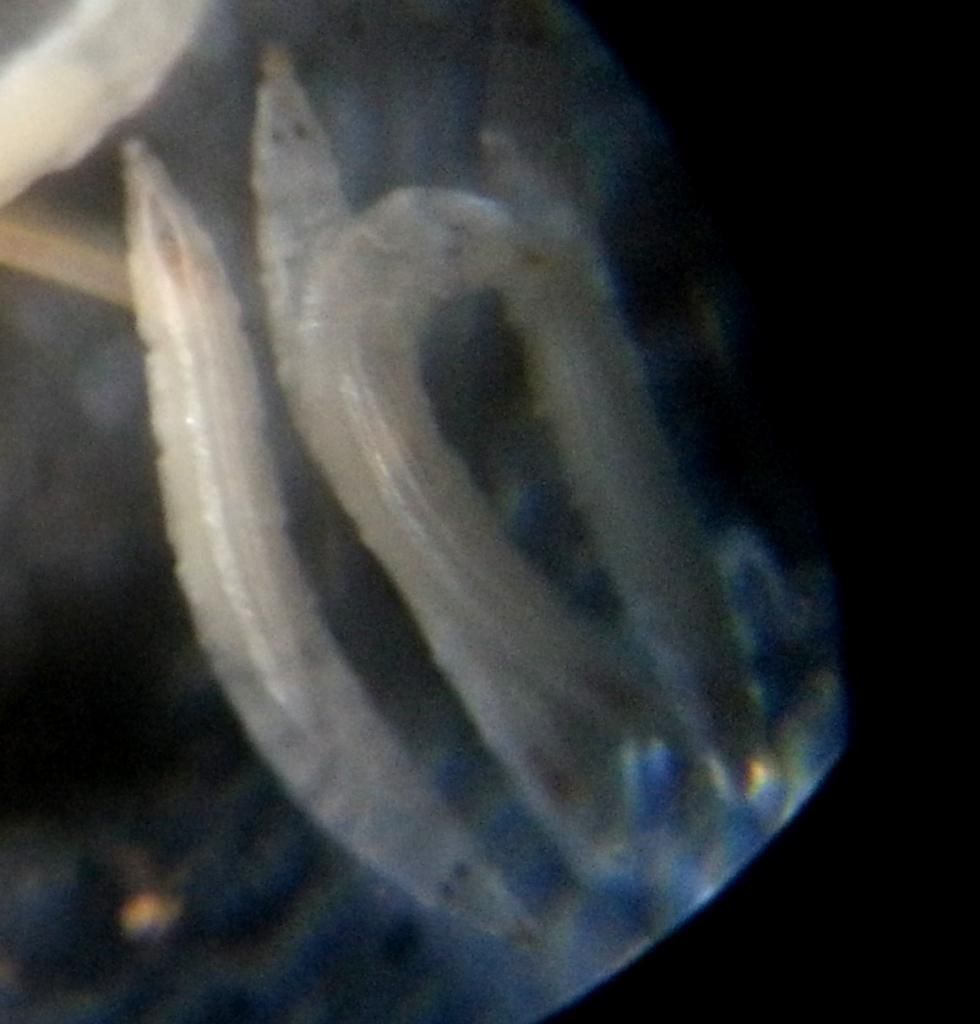  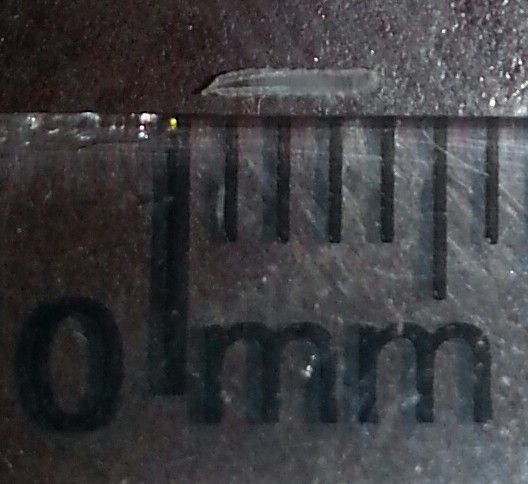   They are very transparent, have a clearly visible cephalopharyngeal skeleton with two thin mouth hooks. The head retracts while moving, and the posterior lobe can retract fully within. They measure at just about 4mm in length. I've looked at ceratopogonidae, drosophilidae, phoridae, ephydridae, and psychodidae, but nothing seems to fit well enough. Edited by RookLegion on 05-11-2014 18:09 |
|
|
|
| John Carr |
Posted on 01-10-2014 21:12
|
|
Member Location: Posts: 9773 Joined: 22.10.10 |
References: Manual of Nearctic Diptera has a key to larvae. It is now available online. Volume 1 has the key to families, and this will probably be a Cyclorrhapha with family treatment in Volume 2. http://www.esc-se...fcmono.php Merritt and Cummins, An Introduction to the Aquatic Insects of North America has another key to all stages of aquatic insects. This is not available free online but Google Books will serve you excerpts. |
|
|
|
| RookLegion |
Posted on 05-11-2014 18:07
|
|
Member Location: Posts: 4 Joined: 24.09.14 |
Still not certain of the id on these critters, but they are still alive, and have not pupated. I got some better pics through the light microscope (had to stitch them to see full body) Head fully retracted in both pics, and caudal lobe fully extended (the caudal lobe can fully retract as well)   Close ups of thoracic segments/head 400x lateral view 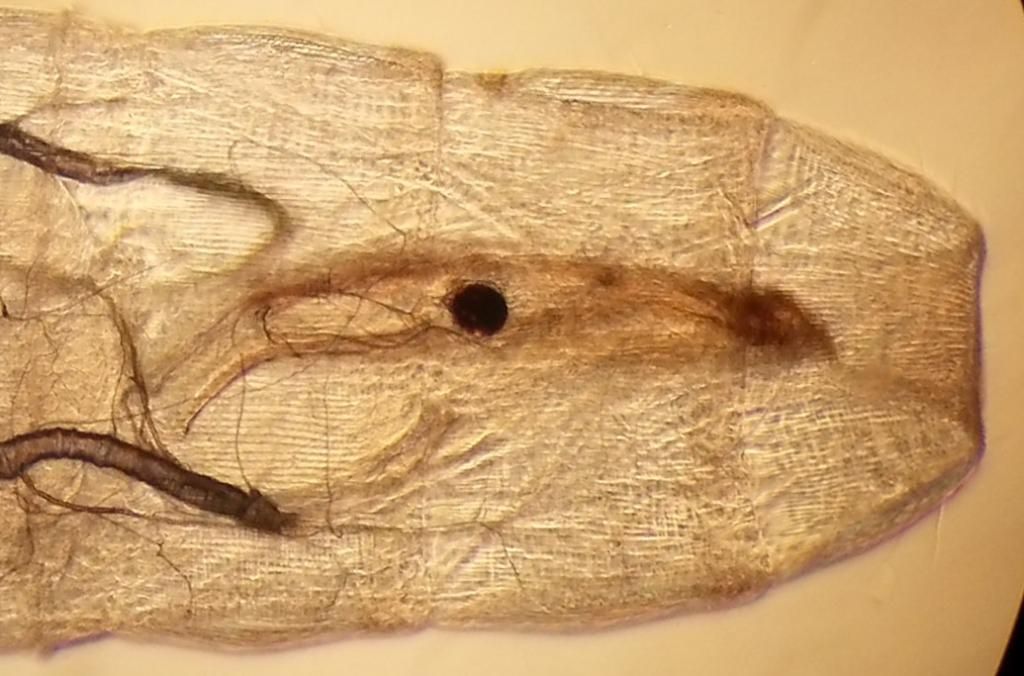 400x ventral view 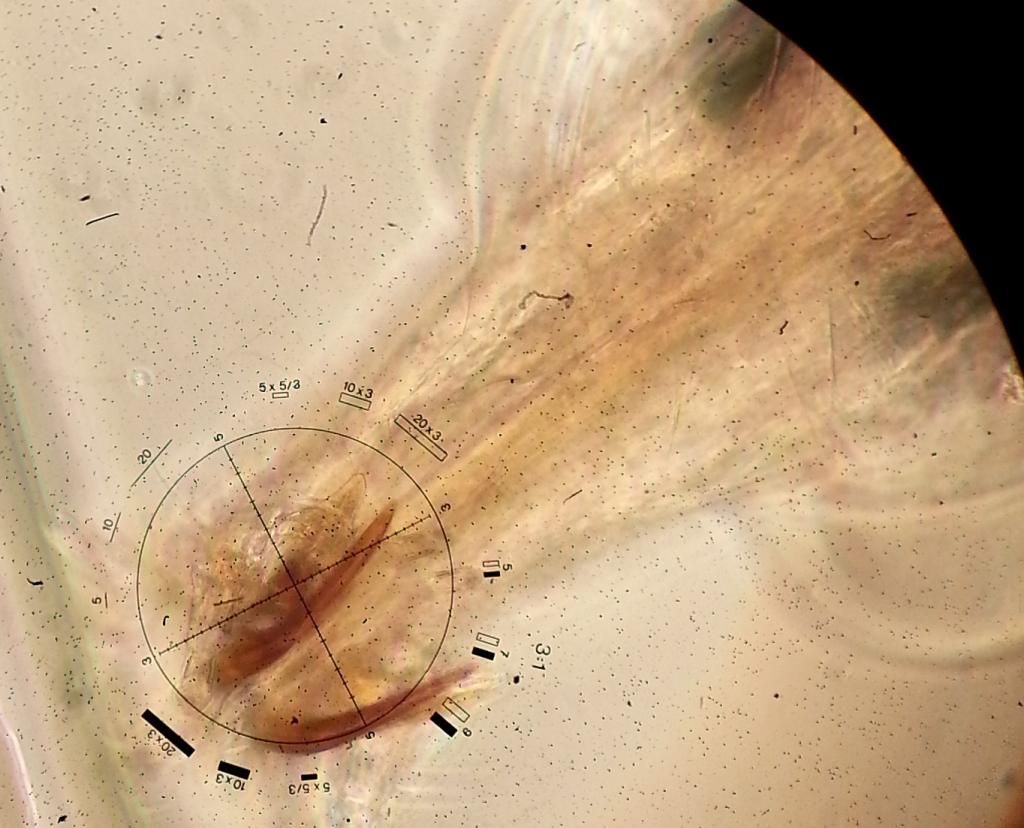 100x lateral view 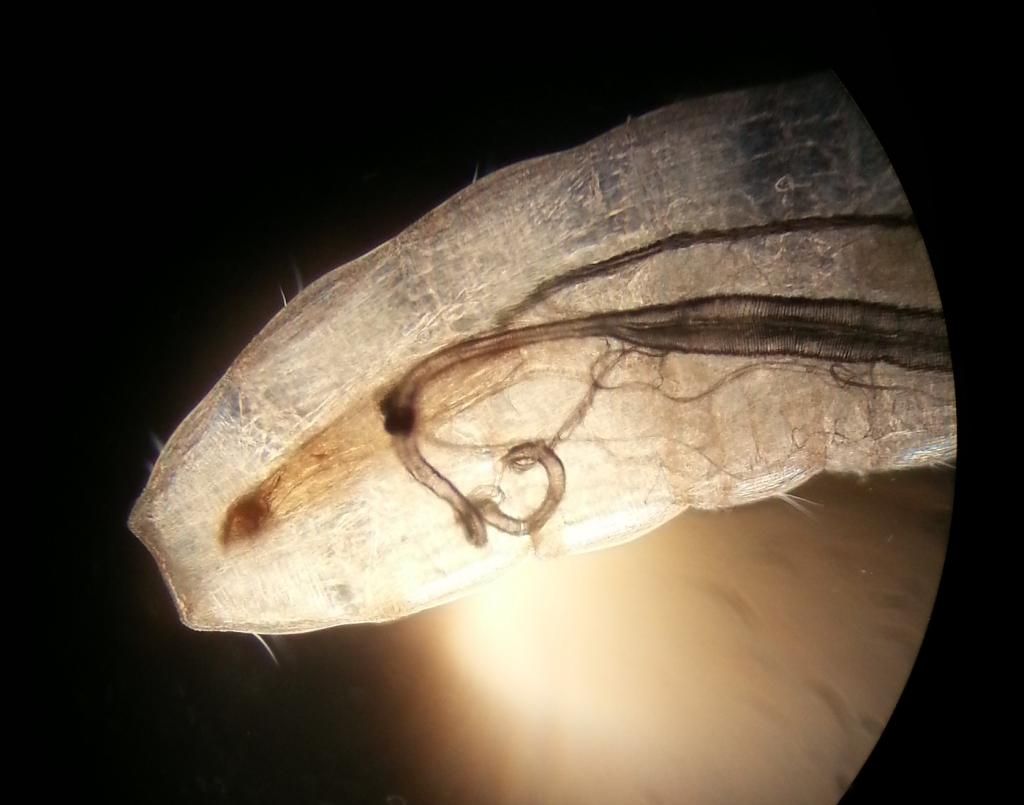
Edited by RookLegion on 05-11-2014 18:12 |
|
|
|
| atylotus |
Posted on 05-11-2014 19:52
|
|
Member Location: Posts: 1112 Joined: 29.05.09 |
these critters are immature Tabanidae larvae, most likely first stage larva. headcapsule with eye-spots, large and curved mandibles, striped epidermis and Grabers' organ in the anal segment are typical. The latter organ are these 4 small black spots at the end. Tabanidae larvae are predators which can be fed with other animals like isopods or soft-bodied organisms. In this young stage ID to genus or species level is very difficult but as they are retrieved from an aquatic habitat and they are white, it would possibly be something like Chrysops, but not sure though. Edited by atylotus on 05-11-2014 19:56 |
|
|
|
| RookLegion |
Posted on 05-11-2014 21:36
|
|
Member Location: Posts: 4 Joined: 24.09.14 |
Thank you, atylotus! I kept arriving at tabanidae when I was first searching, but could find no documentation on any tabanidae species with larvae being anywhere near this small. After reading through the neartic manual and researching some more with better terminology, I came across the term "Tabanomorpha" which I've been using to describe them, but thought they were too small to be a species of tabanidae. And that organ in their terminal segment has been driving me mad, and had become the focus of my hunt here lately, I could find no reference to any diptera larvae possessing any such thing. So, finally having a name for that is fantastic. |
|
|
|
| atylotus |
Posted on 06-11-2014 20:44
|
|
Member Location: Posts: 1112 Joined: 29.05.09 |
the final instar of Chrysops relictus for instance is only about 1.5 cm long and if I remember correctly they moult about 10-11 times before changing into a pupa. A larvae of 4 mm fits rather well with a younger instar of a Tabanidae. The organ of Graber or Graber's organ is typical for Tabanidae and probably has the same function as our inner ear. If you need more literature, I recently made PDF's of all my literature on Tabanid larvae, including our Dutch guide for the adult and larval stages of Tabanidae (together with Theo Zeegers in 2000). Look for Marchand, notes on the early stages of Chrysops : https://archive.o...r-25003764 or the early stages of Tabanid also by Marchand https://archive.o...ftab00marc and you'll find lots of info. and: welcome on the forum Edited by atylotus on 06-11-2014 20:44 |
|
|
|
| RookLegion |
Posted on 07-11-2014 07:53
|
|
Member Location: Posts: 4 Joined: 24.09.14 |
That's some great literature, thank you again! I don't expect I'll be able to identify them any further unless they grow some more. I've seen evidence of two moults so far. I isolated a few of them today and offered them beefheart, and they went crazy for it. A few more pics just for showing the Grabers' organ, I took a few dozen pictures of this organ at different lighting and resolutions while trying to identify it. 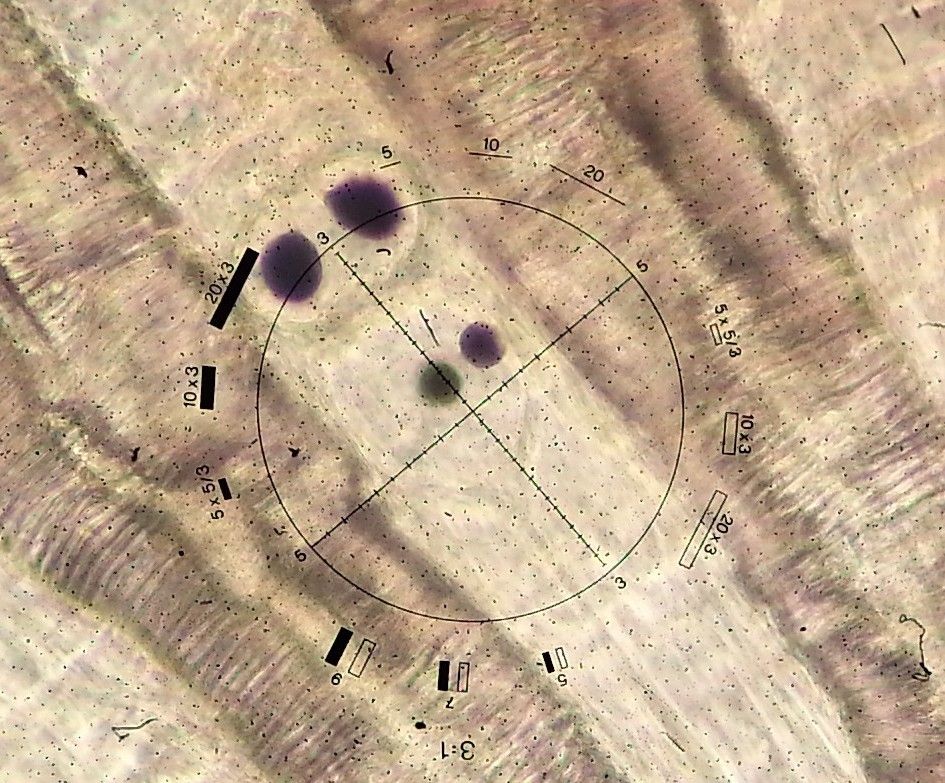  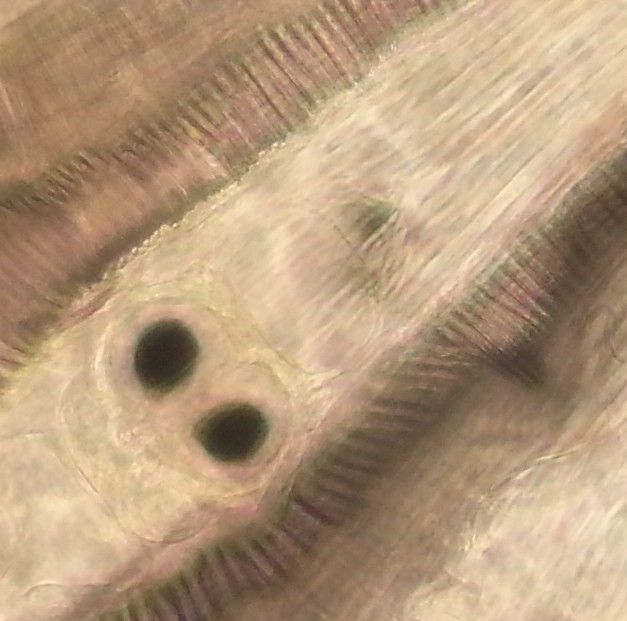 |
|
|
|
| Jump to Forum: |














 but don't see the image in the post.
but don't see the image in the post.
